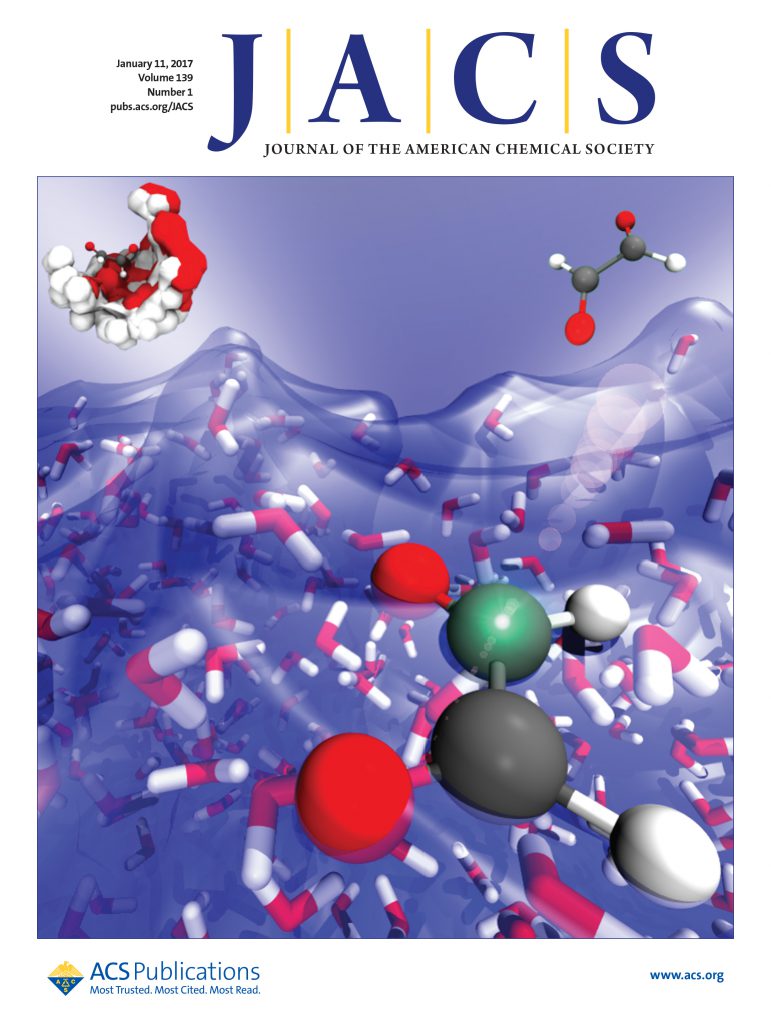基于磺酸功能化的高对比度实时书写显示的明亮和超长有机磷光
IF 14.4
1区 化学
Q1 CHEMISTRY, MULTIDISCIPLINARY
引用次数: 0
摘要
在纯有机物中实现高效、长寿命的室温磷光是一个具有挑战性的课题。虽然在发现高效的荧光粉骨架方面已经付出了很多努力,但荧光粉功能化在提高RTP性能方面的重要性尚未得到足够的重视。在这里,我们证明了与磺酸功能化的荧光粉可以确保明亮和超长的RTP,优于其他取代基。独特的三角锥体结构的磺酸基团允许更有效的(n, π*)跃迁,以提高系统间的交叉效率。其高度极化的S-O键增强了氢键相互作用,并且在聚乙烯醇(PVA)基体内的限制更窄,以最大限度地减少非辐射耗散。此外,其优异的水溶性使得PVA薄膜具有优异的透明度(超过97%),具有48.0的高对比度和0.24的低模糊度的高质量光学成像。此外,从不同的磺酸中获得了具有优异性能的全彩磷光(ΦP, max = 37.2%, τP, max = 2.09 s),验证了该策略的有效性和普遍性。通过利用这些优势,展示了具有清晰成像,高灵敏度和卓越可重写性的实时光书写显示器。这项工作不仅为荧光粉分子设计中的取代基工程做出了贡献,而且为RTP材料在下一代智能光电材料中的应用开辟了新的机遇。本文章由计算机程序翻译,如有差异,请以英文原文为准。

Bright and Ultralong Organic Phosphorescence via Sulfonic Acid Functionalization for High-Contrast Real-Time Light-Writing Display
It is challenging to achieve room-temperature phosphorescence (RTP) in pure organics with both high efficiency and long lifetime. While much effort has been placed on discovering efficient phosphor skeletons, the importance of phosphor functionalization in enhancing the RTP performance has not received adequate attention. Herein, we demonstrate that functionalization of phosphors with sulfonic acid can ensure both bright and ultralong RTP, outperforming other substituents. The unique trigonal pyramidal structure of sulfonic acid group allows for more effective (n, π*) transitions to enhance intersystem crossing efficiency. Its highly polarized S–O bonds render strengthened hydrogen bonding interactions and a narrower confinement within the poly(vinyl alcohol) (PVA) matrix, to minimize the nonradiative dissipation. Furthermore, its excellent water solubility contributes to the outstanding transparency of PVA film (over 97%), yielding high-quality optical imaging with a high contrast ratio of 48.0 and a low blurriness of 0.24. Moreover, full-color phosphorescence with exceptional performance (ΦP, max = 37.2%, τP, max = 2.09 s) is achieved from different sulfonic acids, validating the effectiveness and universality of this strategy. By leveraging these advantages, real-time light-writing displays with sharp imaging, high sensitivity, and exceptional rewritability are demonstrated. This work not only contributes to the substituent engineering in the molecular design of phosphors but also opens new opportunities for RTP materials in the next-generation intelligent optoelectronic materials.
求助全文
通过发布文献求助,成功后即可免费获取论文全文。
去求助
来源期刊
CiteScore
24.40
自引率
6.00%
发文量
2398
审稿时长
1.6 months
期刊介绍:
The flagship journal of the American Chemical Society, known as the Journal of the American Chemical Society (JACS), has been a prestigious publication since its establishment in 1879. It holds a preeminent position in the field of chemistry and related interdisciplinary sciences. JACS is committed to disseminating cutting-edge research papers, covering a wide range of topics, and encompasses approximately 19,000 pages of Articles, Communications, and Perspectives annually. With a weekly publication frequency, JACS plays a vital role in advancing the field of chemistry by providing essential research.

 求助内容:
求助内容: 应助结果提醒方式:
应助结果提醒方式:


